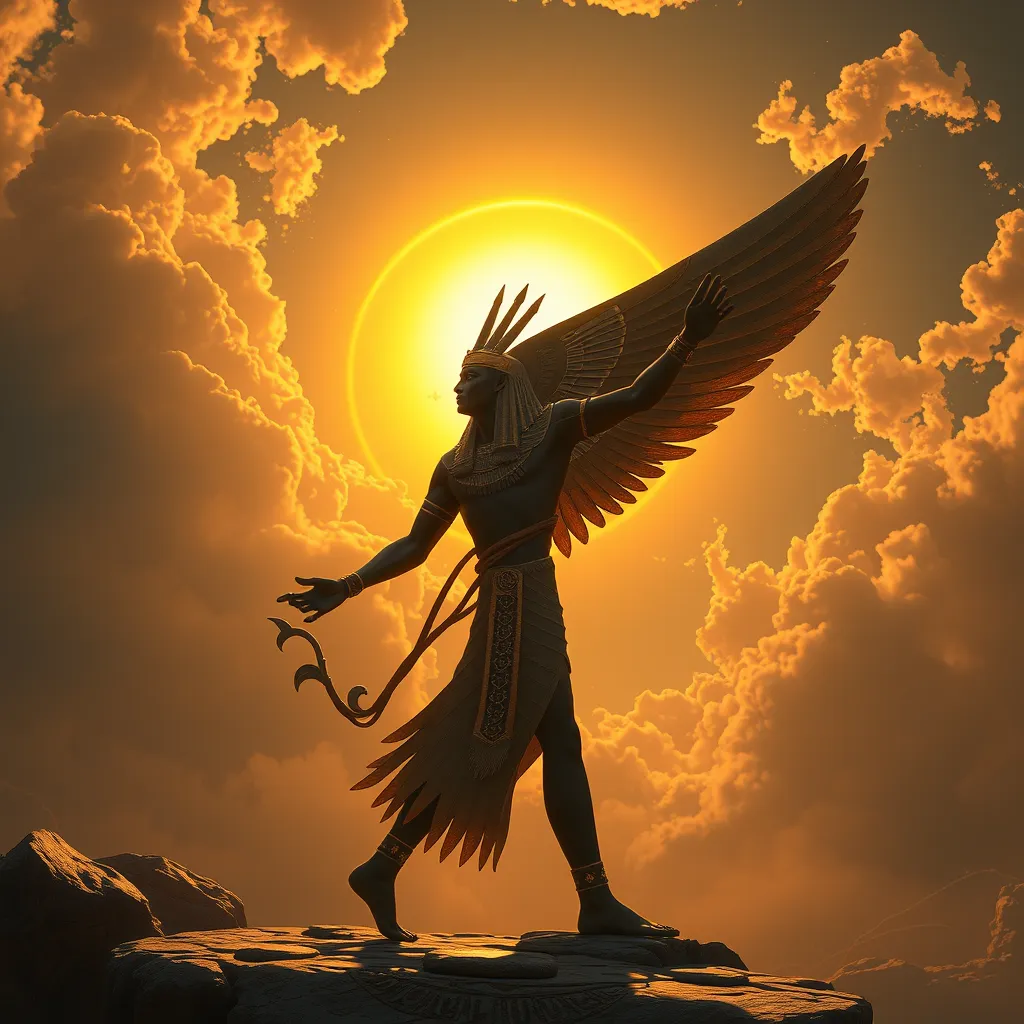The Dance of Ra: The Sun God’s Journey Across the Sky
I. Introduction
In ancient Egyptian mythology, Ra stands as a paramount deity, revered as the Sun God. His influence permeated every aspect of Egyptian culture and daily life, representing life, light, and the cyclical nature of existence. The sun was not merely a celestial body; it was a symbol of power, creation, and resilience. This article aims to explore the intricate journey of Ra across the sky, detailing his significance and the narratives woven around his daily passage.
II. The Mythological Significance of Ra
Ra’s origins are steeped in the rich tapestry of Egyptian creation myths. He is often portrayed as the creator of all things, emerging from the primordial waters of Nun. Ra embodies the sun’s life-giving energy, and his daily journey symbolizes the natural order and the cyclical nature of life.
The sun holds profound symbolism in ancient Egypt, representing not just physical illumination but also spiritual enlightenment. It was seen as a source of order amidst chaos, reflecting the belief that life thrives under the sun’s gaze.
Ra’s influence extended beyond mythology into the realm of governance. Pharaohs identified themselves as the living embodiment of Ra, thus legitimizing their rule through divine association. This connection between Ra and the monarchy reinforced the sun god’s role in maintaining societal order and stability.
III. The Daily Journey of Ra
A. Ra’s passage through the sky during the day
Ra’s journey across the sky is depicted as a magnificent procession in a solar chariot, drawn by powerful horses. As he traverses the heavens, daylight unfolds, illuminating the world and allowing life to flourish. The aspects of daylight are not merely physical phenomena; they represent the warmth and vitality that Ra bestows upon the earth.
Other deities play significant roles in supporting Ra’s journey. For instance:
- Horus: Often depicted as Ra’s protector, safeguarding him from adversaries.
- Nut: The sky goddess who envelops Ra, representing the celestial dome.
- Ma’at: The goddess of truth and order, ensuring that Ra’s journey adheres to the natural laws.
B. Ra’s descent into the underworld at night
As the sun sets, Ra embarks on a transformative journey into the underworld, a realm shrouded in darkness. This descent is rich with symbolism; darkness represents the unknown, and Ra’s nightly voyage embodies themes of death and rebirth. His journey through the underworld is fraught with challenges, as he must navigate obstacles and face adversarial forces.
Among these challenges, Ra contends with the serpent Apep, who embodies chaos and strives to thwart Ra’s resurrection. This nightly battle is a metaphor for the struggle between light and darkness, order and chaos.
IV. The Cycle of Life and Death
Ra’s journey is intricately connected to the cycle of life and death. His daily rebirth at dawn symbolizes renewal and the promise of continuity. Conversely, his descent into the underworld signifies the inevitability of death, a natural aspect of existence.
The representation of death and resurrection during Ra’s nightly voyage is deeply ingrained in Egyptian culture. The belief in the afterlife was paramount, and rituals surrounding the sun and Ra were integral to funerary practices. Egyptians conducted various ceremonies to honor Ra, seeking his guidance and protection for the deceased as they embarked on their own journeys into the afterlife.
V. Ra’s Companions and Adversaries
Ra’s narrative is enriched by a host of companions and adversaries who shape his journey. Key deities include:
- Sekhmet: The lioness goddess of war and healing, often considered Ra’s fierce protector.
- Osiris: The god of the afterlife, who represents the cycle of death and resurrection.
- Nut: The sky goddess, who swallows Ra at night and gives birth to him each morning.
In stark contrast, Apep serves as Ra’s nemesis, symbolizing chaos and disorder. The perpetual struggle between Ra and Apep illustrates the eternal conflict between light and dark, order and chaos, which was essential to the ancient Egyptian worldview.
VI. Artistic Representations of Ra
Ra’s presence is prominently featured in ancient Egyptian art, with numerous depictions across various mediums. He is often portrayed as a falcon-headed man crowned with a solar disc, symbolizing his divine nature. Artistic representations include:
- Hieroglyphs: Texts that celebrate Ra’s power and attributes.
- Sculptures: Statues carved to honor Ra, often placed in temples.
- Temple reliefs: Scenes depicting Ra’s daily journey and his interactions with other deities.
The evolution of Ra’s imagery throughout Egyptian history reflects changing religious practices and cultural values, showcasing the enduring significance of the sun god in the lives of ancient Egyptians.
VII. Ra’s Legacy in Modern Culture
Ra’s influence extends beyond antiquity, resonating in contemporary literature and art. His mythos has inspired countless works, from novels to films, where themes of light versus darkness continue to be explored. The revival of interest in ancient Egyptian mythology has led to a renewed appreciation for Ra and his role in shaping human understanding of the cosmos.
Furthermore, Ra’s significance persists in modern spiritual practices, where he is often invoked as a symbol of illumination, guidance, and protection. Many still find relevance in his attributes, seeking to incorporate the lessons of his journey into their own lives.
VIII. Conclusion
In conclusion, Ra’s journey across the sky encapsulates profound themes of life, death, and renewal. His significance in ancient Egyptian mythology serves as a reminder of the sun’s vital role in sustaining life and the cyclical nature of existence. The legacy of Ra endures, illustrating the universal relevance of the sun as a symbol of hope, enlightenment, and continuity in the human experience.
As we reflect on Ra’s journey, we acknowledge the enduring power of mythology to shape cultural narratives and influence our understanding of the world around us. The dance of Ra across the sky remains a powerful metaphor for life’s journey, resonating through time and culture.




